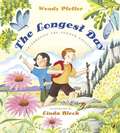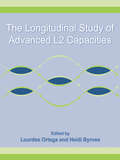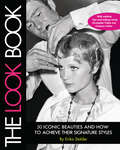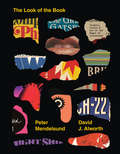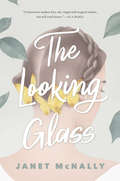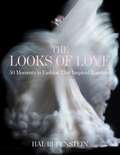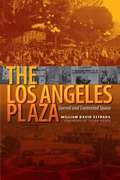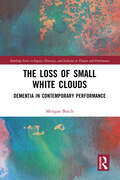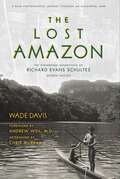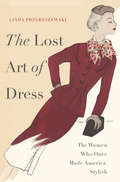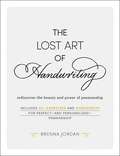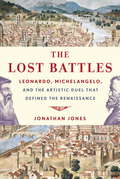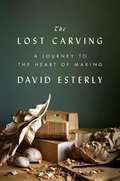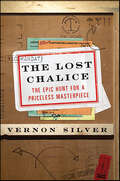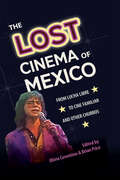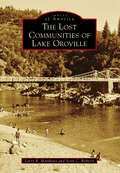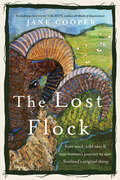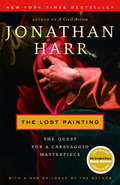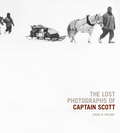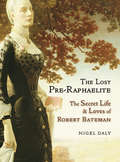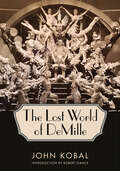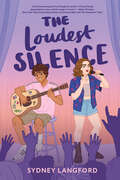- Table View
- List View
The Longest Day: Celebrating the Summer Solstice
by Wendy Pfeffer Linda Bleck<p>A science-oriented nonfiction picture book about the summer solstice- sure to be a classroom favorite! <p>In this fourth and final book in the series about seasons, Wendy Pfeffer turns her attention to summer, when butterflies emerge from silky cocoons and daylight hours stretch longer and longer. With lyrical prose and vibrant illustrations, The Longest Day takes us on a journey through the history and science behind the summer solstice, with a focus on summer celebrations from various cultures around the world. Teachers and students alike will treasure the varied and accessible knowledge, and activities in the back let everyone in on the festivities.</p>
The Longitudinal Study of Advanced L2 Capacities (Second Language Acquisition Research Series)
by Lourdes Ortega Heidi ByrnesResearchers and educators routinely call for longitudinal research on language learning and teaching. The present volume explores the connection between longitudinal study and advanced language capacities, two under-researched areas, and proposes an agenda for future research. Five chapters probe theoretical and methodological reflections about the longitudinal study of advanced L2 capacities, followed by eight chapters that report on empirical longitudinal investigations spanning descriptive, quasi-experimental, qualitative, and quantitative longitudinal methodologies. In addition, the co-editors offer a detailed introduction to the volume and a coda chapter in which they explore what it would take to design systematic research programs for the longitudinal investigation of advanced L2 capacities. The scholars in this volume collectively make the argument that second language acquisition research will be the richer, theoretically and empirically, if a trajectory toward advancedness is part of its conceptualization right from the beginning and, in reverse, that advancedness is a particularly interesting acquisitional level at which to probe contemporary theories associated with the longitudinal study of language development. Acknowledging that advancedness is increasingly important in our multicultural societies and globalized world, the central question explored in the present collection is: How does learning over time evolve toward advanced capacities in a second language?
The Look Book: 50 Iconic Beauties and How to Achieve Their Signature Styles
by Erika StalderAudrey Hepburn's winged eyes. Veronica Lake's peek-a-boo curls. Over the last century, celebrities have been at the forefront of fashion, introducing numerous classic hair and makeup looks to society. Now you can find out where these looks came from—and get them for yourself. This book celebrates fifty beauty icons and examines when each one ushered in a unique look, why it became so legendary, and how to recreate it. Written with celebrity hair stylist Christopher Fulton and celebrity makeup artist Cameron Cohen, this unique collection includes professional tips on how to get the best look, glamorous photos, and easy-to-follow instructions.
The Look of the Book: Jackets, Covers, and Art at the Edges of Literature
by Peter Mendelsund David J. AlworthWhy do some book covers instantly grab your attention, while others never get a second glance? Fusing word and image, as well as design thinking and literary criticism, this captivating investigation goes behind the scenes of the cover design process to answer this question and more.As the outward face of the text, the book cover makes an all-important first impression. The Look of the Book examines art at the edges of literature through notable covers and the stories behind them, galleries of the many different jackets of bestselling books, an overview of book cover trends throughout history, and insights from dozens of literary and design luminaries. Co-authored by celebrated designer and creative director Peter Mendelsund and scholar David Alworth, this fascinating collaboration, featuring hundreds of covers, challenges our notions of what a book cover can and should be.
The Look of the Past
by Ludmilla JordanovaHow can we use visual and material culture to shed light on the past? Ludmilla Jordanova offers a fascinating and thoughtful introduction to the role of images, objects and buildings in the study of past times. Through a combination of thematic chapters and essays on specific artefacts - a building, a piece of sculpture, a photographic exhibition and a painted portrait - she shows how to analyse the agency and visual intelligence of artists, makers and craftsmen and make sense of changes in visual experience over time. Generously illustrated, and drawing on numerous examples of images and objects from 1600 to the present, this is an essential guide to the skills that students need in order to describe, analyse and contextualise visual evidence. The Look of the Past will encourage readers to think afresh about how they, like people in the past, see and interpret the world around them.
The Looking Glass
by Janet McNallyPerfect for fans of Emily Henry and Sarah Dessen, Janet McNally’s imaginative story of sisterhood shows that the fiercest of loves are often the ones that exist outside of happily-ever-afters.GIRLS IN TROUBLE. That’s what Sylvie Blake’s older sister Julia renamed their favorite fairy tale book, way back when they were just girls themselves. Now Julia has disappeared—and no one knows for sure if she wants to be away, or if she’s the one in trouble.Then a copy of their old storybook arrives with a mysterious list inside, and Sylvie begins to see signs of her sister, and their favorite fairy tales, everywhere she goes. With the help of her best friend’s enigmatic brother and his beat-up car, Sylvie sets out to follow the strange signs right to Julia and return to New York with her in tow. But trouble comes in lots of forms—and Sylvie soon learns that the damsel in distress is often the only one who can save herself.
The Looks of Love: 50 Moments in Fashion that Inspired Romance
by Hal RubensteinHal Rubenstein, fashion authority, consultant, and author of the bestselling 100 Unforgettable Dresses, presents fifty of the most influential romantic moments in style from the 1930s to today, in this full-color collection that reveals each item's indelible place in the pantheons of fashion and popular culture.In The Looks of Love, Hal Rubenstein showcases seminal moments and events in television and film, on the runway and red carpet, and in social media that have changed the way we look at love, fashion, passion, romance, marriage, beauty, and style. From Alexander McQueen’s stunning dance marathon collection inspired by the film They Shoot Horses Don’t They? to shoulder-pad-clad Krystle and Alexis Carrington’s jealous catfights; from all eight of Elizabeth Taylor’s wedding ensembles to Angelina Jolie’s singular Versace wedding gown with a veil embroidered with her children’s drawings, Rubenstein brings his impeccable eye, compelling voice, and impressive depth of knowledge to these iconic moments. Here, too are anecdotes and first-person commentary from more than a dozen world-class designers that offer fascinating insight into each “look.”Spanning eras and media, combining more than 225 images and essays, The Looks of Love includes such innovative trendsetters as Humphrey Bogart’s trench coat in Casablanca; Marc Jacobs’s spectacularly romantic show for Louis Vuitton that featured models disembarking from a vintage steam train; Beyoncé’s “All the Single Ladies” video; Versace’s “Miami” collection; The romantic world of Ralph Lauren; the marriage of the Duke and Duchess of Windsor—Edward VIII and Wallis Simpson; The Summer of Love—Woodstock; Gene Kelly’s sportswear in Singing in the Rain; DKNY advertising; and much more.Playful and profound, trendy and timeless, stylish and sophisticated, The Looks of Love illuminates our evolving culture and couture in fresh and startling way.
The Los Angeles Plaza
by William David EstradaCity plazas worldwide are centers of cultural expression and artistic display. They are settings for everyday urban life where daily interactions, economic exchanges, and informal conversations occur, thereby creating a socially meaningful place at the core of a city. At the heart of historic Los Angeles, the Plaza represents a quintessential public space where real and imagined narratives overlap and provide as many questions as answers about the development of the city and what it means to be an Angeleno. The author, a social and cultural historian who specializes in nineteenth- and early twentieth-century Los Angeles, is well suited to explore the complex history and modern-day relevance of the Los Angeles Plaza. From its indigenous and colonial origins to the present day, Estrada explores the subject from an interdisciplinary and multiethnic perspective, delving into the pages of local newspapers, diaries and letters, and the personal memories of former and present Plaza residents, in order to examine the spatial and social dimensions of the Plaza over an extended period of time. The author contributes to the growing historiography of Los Angeles by providing a groundbreaking analysis of the original core of the city that covers a long span of time, space, and social relations. He examines the impact of change on the lives of ordinary people in a specific place, and how this change reflects the larger story of the city.
The Loss of Small White Clouds: Dementia in Contemporary Performance (Routledge Series in Equity, Diversity, and Inclusion in Theatre and Performance)
by Morgan BatchThis volume seeks to instigate a discussion about dementia in theatre. The discussions in this book borrow from the literature on dementia’s representation in other artforms, while reflecting on theatre’s unique capacity to incorporate multiple artforms in a live context (hypermediacy). The author examines constructions of diegesis and the use of various performance tools, including physical theatre, puppetry, and postdramatic performance. She discusses stage representations of interior experiences of dementia; selfhood in dementia; the demarcation of those with dementia from those without; endings, erasure, and the pursuit of catharsis; placelessness and disruptions of traditional dramatic constructions of time; and ultimately, performances creatively led by people with dementia. The book traces patterns of narrativisation on the stage—including common dramaturgical forms, settings, and character relationships—as well as examples that transcend mainstream representation. This book is important reading for theatre and performance students, scholars, and practitioners, as well as cultural studies writers engaged in research about narratives of dementia.
The Lost Amazon: The Pioneering Expeditions of Richard Evans Schultes
by Wade DavisExplore the uncharted Amazon with acclaimed botanist and pioneering Amazonian explorer, Richard Evans Schultes, guided by an intimate narrative that supplements his photography of indigenous tribes, hallucinogenic plants, stunning vistas, and much more.
The Lost Art of Dress: The Women Who Once Made America Stylish
by Linda PrzybyszewskiA history of the women who taught Americans how to dress in the first half of the 20th century--and whose lessons we’d do well to remember today.
The Lost Art of Handwriting: Rediscover the Beauty and Power of Penmanship
by Brenna JordanRevisit the lost art of writing with these fun prompts, worksheets, exercises—and more!—and experience the many benefits of writing by hand, including increased focus and memory, relaxation, and creative expression.Writing by hand may seem passé in the digital age, but it shouldn’t be dismissed as simply an activity for grade schoolers—it offers countless benefits that have been studied by researchers, brain neurologists, therapists, educators, and others who are invested in helping handwriting thrive in an age of advancing technology. Handwriting may be slower than typing—but this gives your brain more time to process information, and stimulates neurological connections that aid in memory, focus, and composition. The process of handwriting can also have a soothing, calming effect and can even serve as a great form of meditation. And of course, it’s a great way of expressing your individuality and personal style. The Lost Art of Handwriting explores the history of writing longhand, and reintroduces proper stroke sequences, letter forms, and techniques for evaluating and improving your handwriting. You will discover how the amazing variety of letter forms provide endless opportunities for making these alphabets your own, and how to choose alternatives that fit your preferences while keeping your writing neat, consistent, and unique to you. You’ll learn how to connect letters in cursive writing to help you write more smoothly, and with practice, more efficiently. Learn how easy it is to apply what you’ve learned into your everyday life with tips for integrating handwriting practice into already jam-packed schedules. Soon, you’ll notice a steady increase in the relaxation, value, and joy that handwriting offers to everyone who persists in putting the pen or pencil to paper.
The Lost Battles
by Jonathan JonesFrom one of Britain's most respected and acclaimed art historians, art critic of The Guardian--the galvanizing story of a sixteenth-century clash of titans, the two greatest minds of the Renaissance, working side by side in the same room in a fierce competition: the master Leonardo da Vinci, commissioned by the Florentine Republic to paint a narrative fresco depicting a famous military victory on a wall of the newly built Great Council Hall in the Palazzo Vecchio, and his implacable young rival, the thirty-year-old Michelangelo. We see Leonardo, having just completed The Last Supper, and being celebrated by all of Florence for his miraculous portrait of the wife of a textile manufacturer. That painting--the Mona Lisa--being called the most lifelike anyone had ever seen yet, more divine than human, was captivating the entire Florentine Republic.And Michelangelo, completing a commissioned statue of David, the first colossus of the Renaissance, the archetype hero for the Republic epitomizing the triumph of the weak over the strong, helping to reshape the public identity of the city of Florence and conquer its heart.In The Lost Battles, published in England to great acclaim ("Superb"--The Observer; "Beguilingly written"--The Guardian), Jonathan Jones brilliantly sets the scene of the time--the politics; the world of art and artisans; and the shifting, agitated cultural landscape. We see Florence, a city freed from the oppressive reach of the Medicis, lurching from one crisis to another, trying to protect its liberty in an Italy descending into chaos, with the new head of the Republic in search of a metaphor that will make clear the glory that is Florence, and seeing in the commissioned paintings the expression of his vision.Jones reconstructs the paintings that Leonardo and Michelangelo undertook--Leonardo's Battle of Anghiari, a nightmare seen in the eyes of the warrior (it became the first modern depiction of the disenchantment of war) and Michelangelo's Battle of Cascina, a call to arms and the first great transfiguration of the erotic into art. Jones writes about the competition; how it unfolded and became the defining moment in the transformation of "craftsman" to "artist"; why the Florentine government began to fall out of love with one artist in favor of the other; and how--and why--in a competition that had no formal prize to clearly resolve the outcome, the battle became one for the hearts and minds of the Florentine Republic, with Michelangelo setting out to prove that his work, not Leonardo's, embodied the future of art. Finally, we see how the result of the competition went on to shape a generation of narrative paintings, beginning with those of Raphael. A riveting exploration into one of history's most resonant exchanges of ideas, a rich, fascinating book that gives us a whole new understanding of an age and those at its center.
The Lost Carving
by David Esterly"A beautiful, intricate meditation on creativity and discovery, on fire and rebirth. ” -Elizabeth Gilbert Awestruck at the sight of a Grinling Gibbons carving in a London church, David Esterly chose to dedicate his life to woodcarving-its physical rhythms, intricate beauty, and intellectual demands. Forty years later, he is the foremost practitioner of Gibbons’s forgotten technique, which revolutionized ornamental sculpture in the late 1600s with its spectacular cascades of flowers, fruits, and foliage. After a disastrous fire at Henry VIII’s Hampton Court Palace, Esterly was asked to replace the Gibbons masterpiece destroyed by the flames. It turned out to be the most challenging year in Esterly’s life, forcing him to question his abilities and delve deeply into what it means to make a thing well. Written with a philosopher’s intellect and a poet’s grace, The Lost Carving explores the connection between creativity and physical work and illuminates the passionate pursuit of a vocation that unites head and hand and heart. .
The Lost Chalice: The Real-Life Chase for One of the World's Rarest Masterpieces—a Priceless 2,500-Year-Old Artifact Depicting the Fall of Troy
by Vernon Silver“A riveting story of tomb robbers and antiquities smugglers, high-stakes auctioneers and the princely chiefs of the world’s most prestigious museums….A terrific read, from start to finish.”—James L. Swanson, New York Times bestselling author of ManhuntAn Oxford-trained archaeologist and award-winning journalist based in Rome, Vernon Silver brings us The Lost Chalice, the electrifying true story of the race to secure a priceless, 2,500-year-old cup depicting the fall of Troy—a lost treasure crafted by Euphronios, an artist widely considered “the Leonardo Da Vinci of ancient Greece.” A gripping, real life mystery, The Lost Chalice gives readers a behind-the-scenes look at the inner workings of great museums and antiquities collections—exposing a world of greed, backstabbing, and double-dealing.
The Lost Cinema of Mexico: From Lucha Libre to Cine Familiar and Other Churros (Reframing Media, Technology, and Culture in Latin/o America)
by Olivia Cosentino and Brian PriceThe Lost Cinema of Mexico is the first volume to challenge the dismissal of Mexican filmmaking during the 1960s through 1980s, an era long considered a low-budget departure from the artistic quality and international acclaim of the nation’s earlier Golden Age. This pivotal collection examines the critical implications of discovering, uncovering, and recovering forgotten or ignored films.This largely unexamined era of film reveals shifts in Mexican culture, economics, and societal norms as state-sponsored revolutionary nationalism faltered. During this time, movies were widely embraced by the public as a way to make sense of the rapidly changing realities and values connected to Mexico’s modernization. These essays shine a light on many genres that thrived in these decades: rock churros, campy luchador movies, countercultural superocheros, Black melodramas, family films, and Chili Westerns.Redefining a time usually seen as a cinematic “crisis,” this volume offers a new model of the film auteur shaped by productive tension between highbrow aesthetics, industry shortages, and national audiences. It also traces connections from these Mexican films to Latinx, Latin American, and Hollywood cinema at large.A volume in the series Reframing Media, Technology, and Culture in Latin/o America, edited by Héctor Fernández L’Hoeste and Juan Carlos RodríguezPublication of this work made possible by a Sustaining the Humanities through the American Rescue Plan grant from the National Endowment for the Humanities.
The Lost Communities of Lake Oroville (Images of America)
by Larry R. Matthews Scott C. RobertsIn 1968, Lake Oroville flooded the West Branch, North Fork, Middle Fork, and South Fork canyons of the Feather River. Also inundated were the communities of Las Plumas, the Big Bend Power House, Bidwell Bar, and Enterprise. In 1994, Feather Falls Village, located above the lake, also ceased to exist due to a totally different situation. But all of these communities had one thing in common: there were people who had resided in them for decades and who still have an emotional connection to them. This book attempts to preserve some of the history of those areas and also tries to show some of what it was like to live in those now almost forgotten communities.
The Lost Flock: Rare Wool, Wild Isles and One Woman's Journey to Save Scotland's Original Sheep
by Jane Cooper"A windswept love letter"—Cal Flyn, author of Islands of AbandonmentFrom Viking times to pastoral Highland crofts to odious research experiments, this is the untold, real-life detective story of the remarkable little horned sheep known as the Orkney Boreray and the determined woman who moved to one of Scotland's wildest islands to save them.It was Jane Cooper&’s passion for knitting that led her to search for rare-breed sheep and their distinctive wool. When she found a &‘lost flock&’ of Boreray sheep—the UK&’s rarest breed of sheep—it ignited a quest that would ultimately change her life. Uprooting her suburban existence in Newcastle, she embarked on a new adventure as a farmer and shepherd in the faraway Orkney Islands.There, to her astonishment, Jane realized that she was the sole custodian of the last remnants of a unique group of Boreray sheep, what then became her Orkney Boreray flock. She began investigating its mysterious and ancient history, tracking down the origins of the breed, its significance to Scotland&’s natural heritage, and the importance of protecting the Orkney Boreray from extinction."Jane Cooper combines intelligence, heart and passion to create a life of integrity not only for herself but for one of the rarest breeds of sheep on the planet. . . . Her trials and triumphs offer a stellar example for others to follow in their own ways. Bravo!"—Deborah Robson, author of The Fleece and Fiber Sourcebook
The Lost Flock: Rare Wool, Wild Isles and One Woman’s Journey to Save Scotland’s Original Sheep
by Jane CooperThe Lost Flock is the story of the remarkable and rare little horned sheep, known as Orkney Boreray, and the wool-obsessed woman who moved to one of Scotland’s wildest islands to save them. It was Jane Cooper’s passion for knitting that led her to discover the world of rare-breed sheep and their wool. Through this, Jane uncovered the ‘Orkney Borerary’ – a unique group within the UK’s rarest breed of sheep, the Boreray, and one of the few surviving examples of primitive sheep in northern Europe. As her knowledge of this rarest of heritage breeds grew, she took the bold step to uproot her quiet suburban life in Newcastle and relocate to Orkney, embarking on a new adventure and life as farmer and shepherd. Jane was astonished to find that she was the sole custodian of this lost flock in the world, and so she began investigating their mysterious and ancient history, tracking down the origins of the Boreray breed and its significance to Scotland’s natural heritage. From Viking times to Highland crofts and nefarious research experiments in Edinburgh, this is a so-far untold real-life detective story. It is also the story of one woman’s relentless determination to ensure a future for her beloved sheep, and in doing so revealing their deep connection to the Scottish landscape. An unforgettable story of a heritage breed and the importance of its existence.
The Lost Painting
by Jonathan Harr<P>An Italian village on a hilltop near the Adriatic coast, a decaying palazzo facing the sea, and in the basement, cobwebbed and dusty, lit by a single bulb, an archive unknown to scholars. Here, a young graduate student from Rome, Francesca Cappelletti, makes a discovery that inspires a search for a work of art of incalculable value, a painting lost for almost two centuries. The artist was Caravaggio, a master of the Italian Baroque. He was a genius, a revolutionary painter, and a man beset by personal demons. <P>Four hundred years ago, he drank and brawled in the taverns and streets of Rome, moving from one rooming house to another, constantly in and out of jail, all the while painting works of transcendent emotional and visual power. He rose from obscurity to fame and wealth, but success didn't alter his violent temperament. His rage finally led him to commit murder, forcing him to flee Rome a hunted man. He died young, alone, and under strange circumstances. <P>Caravaggio scholars estimate that between sixty and eighty of his works are in existence today. Many others-no one knows the precise number-have been lost to time. Somewhere, surely, a masterpiece lies forgotten in a storeroom, or in a small parish church, or hanging above a fireplace, mistaken for a mere copy. <P>Prizewinning author Jonathan Harr embarks on an spellbinding journey to discover the long-lost painting known as The Taking of Christ-its mysterious fate and the circumstances of its disappearance have captivated Caravaggio devotees for years. After Francesca Cappelletti stumbles across a clue in that dusty archive, she tracks the painting across a continent and hundreds of years of history. <P>But it is not until she meets Sergio Benedetti, an art restorer working in Ireland, that she finally manages to assemble all the pieces of the puzzle.Told with consummate skill by the writer of the bestselling, award-winning A Civil Action, The Lost Painting is a remarkable synthesis of history and detective story. The fascinating details of Caravaggio's strange, turbulent career and the astonishing beauty of his work come to life in these pages. <P><b>A New York Times Bestseller</b>
The Lost Painting
by Jonathan HarrAn Italian village on a hilltop near the Adriatic coast, a decaying palazzo facing the sea, and in the basement, cobwebbed and dusty, lit by a single bulb, an archive unknown to scholars. Here, a young graduate student from Rome, Francesca Cappelletti, makes a discovery that inspires a search for a work of art of incalculable value, a painting lost for almost two centuries. The artist was Caravaggio, a master of the Italian Baroque. He was a genius, a revolutionary painter, and a man beset by personal demons. Four hundred years ago, he drank and brawled in the taverns and streets of Rome, moving from one rooming house to another, constantly in and out of jail, all the while painting works of transcendent emotional and visual power. He rose from obscurity to fame and wealth, but success didn't alter his violent temperament. His rage finally led him to commit murder, forcing him to flee Rome a hunted man. He died young, alone, and under strange circumstances.Caravaggio scholars estimate that between sixty and eighty of his works are in existence today. Many others-no one knows the precise number-have been lost to time. Somewhere, surely, a masterpiece lies forgotten in a storeroom, or in a small parish church, or hanging above a fireplace, mistaken for a mere copy.Prizewinning author Jonathan Harr embarks on an spellbinding journey to discover the long-lost painting known as The Taking of Christ-its mysterious fate and the circumstances of its disappearance have captivated Caravaggio devotees for years. After Francesca Cappelletti stumbles across a clue in that dusty archive, she tracks the painting across a continent and hundreds of years of history. But it is not until she meets Sergio Benedetti, an art restorer working in Ireland, that she finally manages to assemble all the pieces of the puzzle.Told with consummate skill by the writer of the bestselling, award-winning A Civil Action, The Lost Painting is a remarkable synthesis of history and detective story. The fascinating details of Caravaggio's strange, turbulent career and the astonishing beauty of his work come to life in these pages. Harr's account is not unlike a Caravaggio painting: vivid, deftly wrought, and enthralling.". . . Jonathan Harr has gone to the trouble of writing what will probably be a bestseller . . . rich and wonderful. . .in truth, the book reads better than a thriller because, unlike a lot of best-selling nonfiction authors who write in a more or less novelistic vein (Harr's previous book, A Civil Action, was made into a John Travolta movie), Harr doesn't plump up hi tale. He almost never foreshadows, doesn't implausibly reconstruct entire conversations and rarely throws in litanies of clearly conjectured or imagined details just for color's sake. . .if you're a sucker for Rome, and for dusk. . .[you'll] enjoy Harr's more clearly reported details about life in the city, as when--one of my favorite moments in the whole book--Francesca and another young colleague try to calm their nerves before a crucial meeting with a forbidding professor by eating gelato. And who wouldn't in Italy? The pleasures of travelogue here are incidental but not inconsiderable." --The New York Times Book Review"Jonathan Harr has taken the story of the lost painting, and woven from it a deeply moving narrative about history, art and taste--and about the greed, envy, covetousness and professional jealousy of people who fall prey to obsession. It is as perfect a work of narrative nonfiction as you could ever hope to read." --The EconomistFrom the Hardcover edition.
The Lost Photographs Of Captain Scott: Unseen Images From The Legendary Antarctic Expedition
by Dr. David M. WilsonCaptain Scott perished with four of his fellow explorers on their return from the South Pole in March 1912. Almost immediately the myth was founded, based on Scott's diaries, turning him into an icon of courage in the face of impossible circumstances. But during the final months of that journey Scott also took a series of breathtaking photographs: panoramas of the continent, superb depictions of mountains and formations of ice and snow, and photographs of the explorers on the polar trail. But these photos have never been seen - initially fought over, neglected, then lost - until now, that is. For the first time, they are resurrected and are a humbling testament to the men whose graves still lie unmarked in the vastness of the Great Alone.
The Lost Pre-Raphaelite
by Nigel DalyWhen the author bought a falling down fortified house on the Staffordshire moorlands, he had no reason to anticipate the astonishing tale that would unfold as it was restored. A mysterious set of relationships emerged amongst its former owners, revolving round the almost forgotten artist, Robert Bateman, a prominent Pre-Raphaelite and friend of Burne Jones. He was to marry the granddaughter of the Earl of Carlisle, and to be associated with Benjamin Disraeli, William Gladstone, and other prominent political and artistic figures.But he had abandoned his life as an artist in mid-career to live as a recluse, and his rich and glamorous wife-to-be had married the local vicar, already in his sixties and shortly to die. The discovery of two clearly autobiographical paintings led to an utterly absorbing forensic investigation into Bateman's life.The story moves from Staffordshire to Lahore, to Canada, Wyoming, and then, via Buffalo Bill, to Peru and back to England. It leads to the improbable respectability of Imperial Tobacco in Bristol, and then, less respectably, to a car park in Stoke-on-Trent. En route the author pieces together an astonishing and deeply moving story of love and loss, of art and politics, of morality and hypocrisy, of family secrets concealed but never quite completely obscured. The result is a page-turning combination of detective story and tale of human frailty, endeavor, and love. It is also a portrait of a significant artist, a reassessment of whose work is long overdue.Nigel Daly is an antique dealer and house restorer.
The Lost World of DeMille (Hollywood Legends Series)
by John KobalLonglisted for the 2020 Moving Image Book Award by the Kraszna-Krausz FoundationAs only an accomplished author, consummate collector, and savvy insider can, John Kobal tells the story of the man who invented Hollywood, Cecil Blount DeMille (1881–1959). Kobal narrates the story of DeMille’s life and follows the director’s career from his first film, The Squaw Man, in 1914, through the seventy films he directed culminating with The Ten Commandments in 1956 before his death in 1959. Even that first film received an enthusiastic response from the public, and that popular enthusiasm would follow DeMille throughout his career. DeMille got his start by observing a film being shot—once standing for hours on a box looking through a window, watching every move made by the director, players, and cameraman. From that humble beginning, he soon mastered the craft of directing and created one of show business’s greatest careers. Autocrat and artist, DeMille immersed himself totally in each picture he directed and demanded complete fealty from his casts and crews. DeMille was said to know more about what the American public wanted than anyone else in Hollywood. He pushed the boundaries of censorship, and audiences responded by forming long lines at the box office. From the American West to ancient Egypt, he created such magical films as The Crusades and The Greatest Show on Earth that brought vividly to life fantasies perfectly suited to post–World War I and mid-century America. Kobal describes DeMille’s impact on Hollywood as a director and showman. He argues that this master filmmaker stands for something largely lost in American filmmaking, a sort of naïve, generous, big-thinking self-confidence—a belief that all things are possible. John Kobal wrote over thirty books on film and photography. His final manuscript, The Lost World of DeMille, was completed shortly before his death in 1991. It is published at last by University Press of Mississippi.
The Loudest Silence
by Sydney LangfordTwo disabled queer teens find belonging in this poignant platonic love story about singing, signing, and solidarity.Casey Kowalski once dreamed of becoming a professional singer. Then the universe threw her a life-altering curveball—sudden, permanent, and profound hearing loss—just before her family&’s move from Portland to Miami. Now, she&’s learning to navigate the world as a Deaf-Hard of Hearing person while trying to conceal her hearing loss from her new schoolmates. Hayden González-Rossi is also keeping secrets. Three generations of González men have risen to stardom on the soccer field, and Hayden knows his family expects him to follow in their footsteps, but he wants to quit soccer and pursue a career on Broadway. If only his Generalized Anxiety Disorder didn&’t send him into a debilitating spiral over the thought of telling the truth.Casey and Hayden are both determined to hide who they really are. But when they cross paths at school, they bond over their shared love of music and their mutual feeling that they don&’t belong, and the secrets come spilling out. Their friendship is the beating heart of this dual-perspective story featuring thoughtful disability representation, nuanced queer identities, and a lovably quirky supporting cast.
